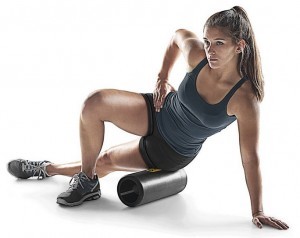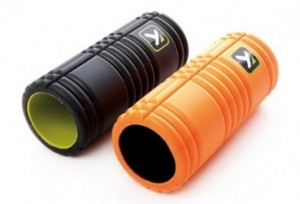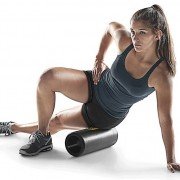Foam Rolling Benefits
Editor: Specialized Physical Therapy Staff - Board Certified Clinical Specialists in Orthopedic Physical Therapy. North Reading, MA 01864.
Everyone has seen those long cylindrical foam tubes at the gym and may have even seen athletes stretching with them- but what are the benefits of using foam rollers and which one to
 choose?
choose? The basic idea of foam rolling is using your own body weight to slowly glide over a foam roller to offer a deep self-massage. Foam rolling offers a superb alternative to static stretching by not only getting into your muscles to elongate muscle fibers and provide deep tendon stretch, but they also break-up adhesions (knots) and scar tissue, restore muscle balance, and provide a release of stress and tension. To better understand the benefits of foam rolling, it is helpful to understand how adhesions and scar tissue form.
Adhesions form when muscle fascia clump together. Our muscles are composed of many individual fibers working together. Muscle fibers are grouped together with a layer of tissue called fascia. Fascia will often clump together when muscles are injured, overused, or underused causing pain, soreness, and reduced flexibility. Scar tissue forms to repair a damaged muscle fiber. When a muscle fiber is damaged, our bodies work quickly to heal the injury by laying down scar tissue to essentially glue the ends together. This “glue” is not as flexible as the original muscle fiber. Both adhesions and scar tissue are readily targeted with the use of foam rolling by sending increased blood flow to the area. This increased circulation allows for increased flexibility, movement, and overall joint range of motion. Daily use of foam rollers uses these same ideas to keep tissues loose and flexible thereby decreasing risk of injury.
Foam rollers are affordable, fun to use, and can target muscles throughout the body. Depending on preference, frequency of use, and experience level, there are all sorts of foam rollers with different lengths, widths, firmness, and color.
Color:
- White: softest, great for beginners as it can be painful at first
- Blue and green: medium firmness
- Black and purple: firmest rollers
Duration:
- Can be self-directed
- Start with shorter time frames close to 30 seconds and progressing up to 2-3 minutes per muscle group
When:
- Anytime throughout the day
- 2-3 hours before or immediately before a workout to lengthen muscles and decrease risk of injury as part of a dynamic stretch
- After a workout as long as no injuries occur during workout as foam rolling can potentially increase the inflammatory response of an injured tissue
Knots and tight muscles
- Can be painful at first, typically feel best with a softer roller
- Discomfort will progress to a massage-like feeling and allow for a potential increase in firmness
- When targeting specific knot or tight spot, gently remain on this site until noting a release
- Remember to breathe throughout
At Specialized Physical Therapy we frequently recommend, and include foam rolling as part of our individualized treatment approach especially when treating ITB syndrome, peroneal  tendonitis, decreased spinal motion, and generalized decreased lower extremity flexibility.
tendonitis, decreased spinal motion, and generalized decreased lower extremity flexibility.




